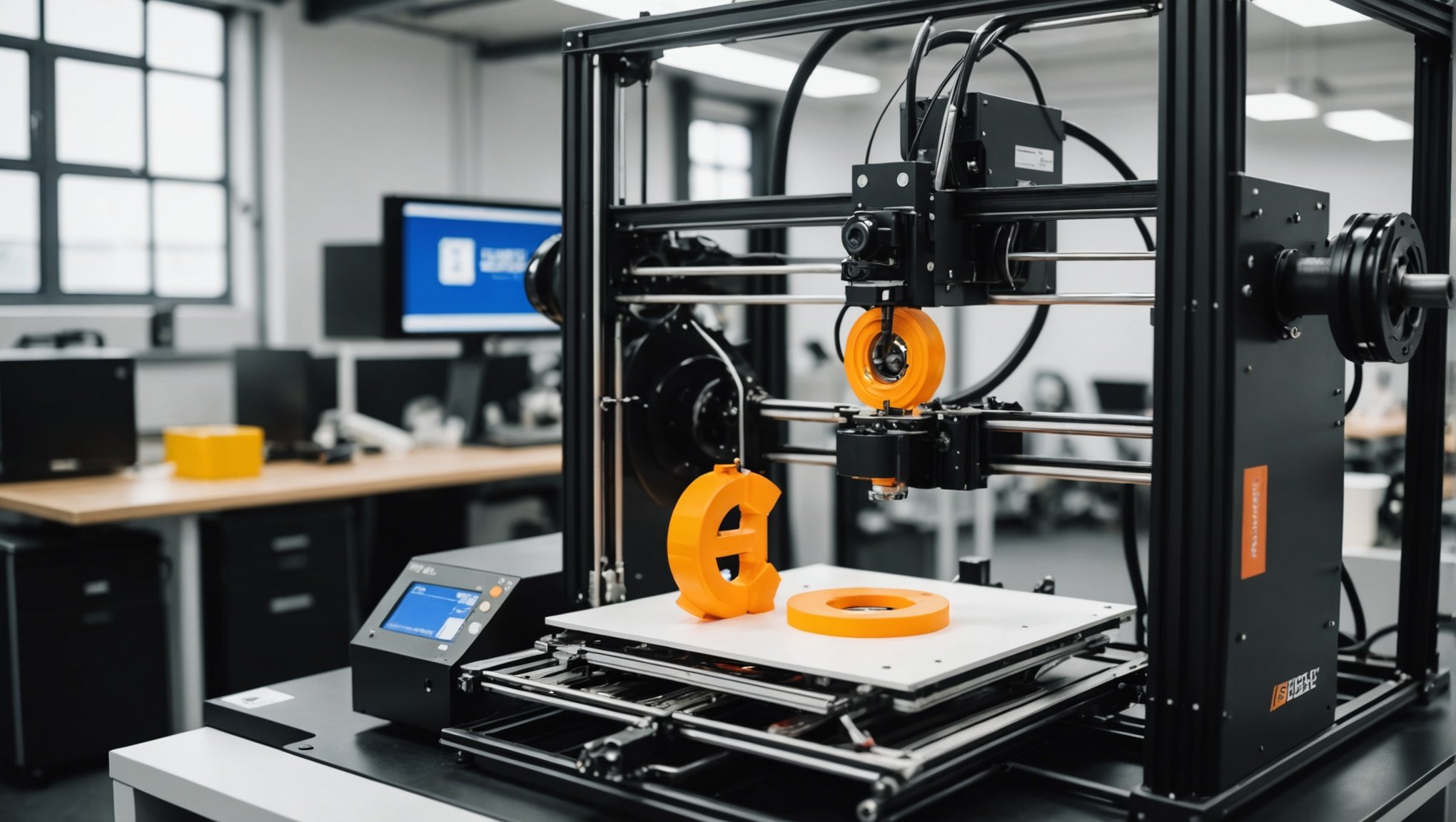In the rapidly evolving landscape of 3D printing, safeguarding intellectual property rights is more vital than ever for UK firms. As technology advances, so do the risks of infringement and counterfeiting. Understanding and implementing robust compliance strategies can protect innovations while ensuring legal adherence. This guide explores key tactics tailored specifically for 3D printing businesses, empowering them to navigate legal complexities effectively and maintain their competitive edge. Explore actionable insights that can help your firm thrive while honoring intellectual property rights.
Overview of Intellectual Property Rights in 3D Printing
Understanding the landscape of intellectual property rights is crucial for navigating the 3D printing industry.
In parallel : Essential Financial Management Tactics for UK Tech Startups: A Comprehensive Guide
Definition and Importance
Intellectual Property Rights (IPR) encompass legal protections for creations of the mind, including inventions, designs, and artistic works. In the context of 3D printing, these rights are vital for safeguarding innovations and ensuring creators maintain control over their work. The rapid growth of 3D printing technology has intensified the need for robust IPR frameworks, as it enables easy reproduction of designs, potentially infringing on existing rights.
UK Laws and Regulations
The UK has established comprehensive laws to address intellectual property rights in the 3D printing sector. These include the Patents Act 1977, which protects inventions, and the Copyright, Designs and Patents Act 1988, which covers artistic works and designs. Compliance with these regulations is essential for businesses and individuals involved in 3D printing to avoid legal disputes and protect their innovations.
Also to read : Essential Strategies for UK Health Tech Startups to Attract Venture Capital Investment
Key Points:
- Patents: Protects new inventions and processes.
- Copyright: Safeguards artistic and literary works.
- Design Rights: Covers the appearance of a product.
By understanding and adhering to these laws, stakeholders in the 3D printing industry can effectively manage their intellectual property, fostering innovation and creativity.
Compliance Measures for Protecting Intellectual Property
Implementing effective strategies ensures robust protection of intellectual property in 3D printing.
Key Compliance Strategies
3D printing firms must adopt comprehensive compliance strategies to safeguard their intellectual property (IP). This involves establishing a clear IP protection policy, which outlines procedures for identifying and securing innovations. Regular audits can help detect potential infringements, ensuring adherence to relevant laws and regulations.
Establishing an IP Protection Policy
Creating a robust IP protection policy is pivotal. Start by conducting a thorough assessment of the firm’s current IP assets. Develop clear guidelines on how these assets are to be managed and protected. It is crucial to document all innovations and maintain detailed records. Consider the following steps:
- Identify: Catalog all IP assets.
- Secure: Implement measures to protect these assets.
- Monitor: Regularly review compliance with IP laws.
Importance of Employee Training
Employee training on IP compliance is vital for ensuring that all team members understand the significance of protecting intellectual property. Training programs should focus on educating employees about the firm’s IP protection policy, the importance of compliance, and the potential consequences of infringement. By fostering an informed workforce, 3D printing firms can enhance their IP protection efforts and mitigate risks associated with IP violations.
Legal Frameworks Affecting 3D Printing Firms in the UK
Exploring the intricate legal frameworks is essential for understanding the challenges faced by 3D printing firms in the UK.
Copyright Law
Copyright law plays a crucial role in protecting the artistic aspects of 3D printed designs. In the UK, the Copyright, Designs and Patents Act 1988 provides comprehensive coverage for creators, ensuring their original works are safeguarded against unauthorized reproduction. This is particularly significant for 3D printing firms, as digital files can be easily shared and replicated. Understanding copyright law helps firms navigate potential infringements and maintain control over their creations.
Patent Law
Patent law is vital for securing exclusive rights to inventions, including those developed through 3D printing. The Patents Act 1977 outlines the criteria for patentability, emphasizing novelty and inventive steps. For 3D printing firms, understanding patent law is essential to protect technological advancements and secure a competitive edge. Firms must ensure their designs meet patent requirements and follow the correct processes to obtain protection.
Trade Secrets
Protecting trade secrets is a strategic approach for 3D printing firms to maintain a competitive advantage. Unlike patents, trade secrets do not require public disclosure, allowing firms to keep sensitive information confidential. Implementing robust security measures and employee agreements can help safeguard trade secrets and prevent unauthorized access or disclosure.
- Key Points:
- Copyright safeguards artistic works.
- Patents protect inventions.
- Trade secrets maintain confidentiality.
Risk Assessment and Management
Identifying and managing risks is crucial for protecting intellectual property in 3D printing.
Identifying Potential Risks
In the realm of 3D printing, risk assessment is paramount to safeguard intellectual property (IP). Identifying potential IP risks involves scrutinizing areas where designs and inventions might be exposed to unauthorized use. Common risks include digital file theft, design replication, and patent infringement. By understanding these vulnerabilities, firms can better protect their assets.
Techniques for Conducting an Effective Risk Assessment
Conducting a thorough risk assessment requires a structured approach. Begin by cataloging all IP assets and evaluating their exposure to IP risks. Employ techniques such as SWOT analysis to identify strengths, weaknesses, opportunities, and threats related to IP. Regular audits and monitoring systems can help detect and mitigate potential risks early.
Developing a Risk Management Plan
Developing a comprehensive risk management plan tailored to 3D printing operations is essential. This plan should include strategies for mitigating identified IP risks, such as enhancing digital security, implementing robust access controls, and establishing clear protocols for IP protection. Consider the following steps:
- Assess: Regularly evaluate potential risks.
- Mitigate: Implement measures to reduce risks.
- Review: Continuously update the risk management plan.
By proactively managing risks, firms can ensure their intellectual property remains secure and protected.
Case Studies of IP Protection in 3D Printing
Exploring real-world examples provides insights into effective IP protection strategies.
Successful IP Protection Strategies
Several UK 3D printing firms have implemented successful IP protection strategies. For instance, Company A developed an internal IP management system that tracks and updates their intellectual property assets regularly. This proactive approach has minimized infringement risks and enhanced their competitive edge. Another example is Company B, which established partnerships with legal experts to navigate complex IP regulations, ensuring robust protection for their designs.
Lessons from IP Infringement Cases
Learning from past IP infringement cases is crucial for firms. A notable case involved Company C, which faced significant losses due to inadequate IP protection measures. They failed to secure patents for a new technology, leading to unauthorized replication by competitors. This highlighted the importance of securing patents early and conducting regular IP audits.
Best Practices in Renowned Companies
Renowned 3D printing companies have adopted best practices for IP protection. These include implementing comprehensive IP training programs for employees and using advanced digital security systems to safeguard designs. Additionally, they focus on maintaining detailed documentation of all IP assets to facilitate legal processes if necessary.
- Key Takeaways:
- Proactive IP management
- Early patent securing
- Comprehensive employee training
By examining these examples, firms can enhance their IP protection strategies, fostering innovation and growth.
Resources and Tools for IP Compliance
Equipping 3D printing firms with the necessary resources ensures effective IP management and compliance.
Overview of Available Tools
To ensure robust IP compliance, firms can utilize a variety of tools designed for IP management. These tools help monitor and protect intellectual property assets. Software solutions like IPfolio and Anaqua provide comprehensive management capabilities, tracking IP portfolios and alerting users to potential infringements. Such tools streamline the process of maintaining compliance and safeguarding innovations.
Recommended Resources for Legal Advice
Access to legal advice is crucial for navigating complex IP regulations. Engaging with IP law firms or consultants can provide tailored guidance and strategies for protecting intellectual property. Firms like Bird & Bird and Marks & Clerk offer specialized services in IP law, helping businesses manage risks and ensure compliance. Utilizing these resources aids in understanding legal nuances and implementing effective protection measures.
Importance of Utilizing Technology
Embracing technology is essential for safeguarding intellectual property. Advanced digital security systems protect against unauthorized access and replication. Implementing encryption and secure access controls can significantly reduce risks associated with IP theft. By leveraging technology, firms enhance their capacity to protect valuable assets and maintain a competitive edge.
- Key Tools:
- IPfolio
- Anaqua
- Digital security systems
These resources and tools are integral to maintaining effective IP compliance in the ever-evolving landscape of 3D printing.
Collaborating with Legal Professionals
Strategic partnerships with legal experts enhance IP compliance in 3D printing.
Role of Legal Professionals
Legal professionals play a pivotal role in developing robust IP compliance strategies for 3D printing firms. They bring expertise in navigating complex intellectual property laws, ensuring that businesses adhere to regulations. By collaborating with IP lawyers, firms can effectively manage risks and protect their innovations. These professionals assist in drafting contracts, filing patents, and handling legal disputes, providing comprehensive support throughout the IP lifecycle.
Selecting the Right Legal Partner
Choosing the right legal partner is crucial for effective IP compliance. Firms should consider partners with specialized knowledge in 3D printing and a proven track record in intellectual property law. Evaluate potential partners based on their experience, reputation, and understanding of industry-specific challenges. Engaging a legal team with these qualities ensures tailored guidance and proactive risk management.
Benefits of Ongoing Legal Consultation
Ongoing legal consultation offers significant benefits for maintaining IP compliance. Regular updates from IP lawyers help firms stay informed about changes in legislation and emerging trends. This continuous collaboration ensures that compliance strategies remain relevant and effective. By investing in ongoing legal support, 3D printing firms can safeguard their innovations and maintain a competitive edge.
- Key Benefits:
- Expert guidance
- Risk management
- Up-to-date compliance strategies
Future Trends in IP Protection for 3D Printing
Exploring innovations shaping the landscape of intellectual property protection.
Emerging Technologies and Impact
Emerging technologies are reshaping the future of IP protection in the 3D printing industry. Innovations like blockchain and artificial intelligence (AI) offer new methods for securing intellectual property rights. Blockchain can provide immutable records of design ownership, enhancing transparency and reducing disputes. AI can assist in monitoring and detecting potential infringements, making IP management more efficient. By integrating these technologies, firms can strengthen their IP protection strategies.
Predictions for IP Compliance Regulations
The future of IP compliance regulations in 3D printing is expected to evolve significantly. Governments and regulatory bodies are likely to introduce more stringent laws to address the complexities introduced by technological advancements. This could include new frameworks for digital rights management and enhanced enforcement mechanisms. Firms should stay informed about these potential changes to maintain compliance and protect their innovations effectively.
Preparing for Changes
To adapt to the evolving 3D printing landscape, firms must proactively prepare for changes in IP protection. This involves investing in technology, updating compliance strategies, and fostering partnerships with legal experts. Consider the following actions:
- Invest in emerging technologies.
- Update compliance strategies regularly.
- Collaborate with legal professionals for guidance.
By anticipating these trends, firms can ensure robust protection of their intellectual property in a dynamic environment.











